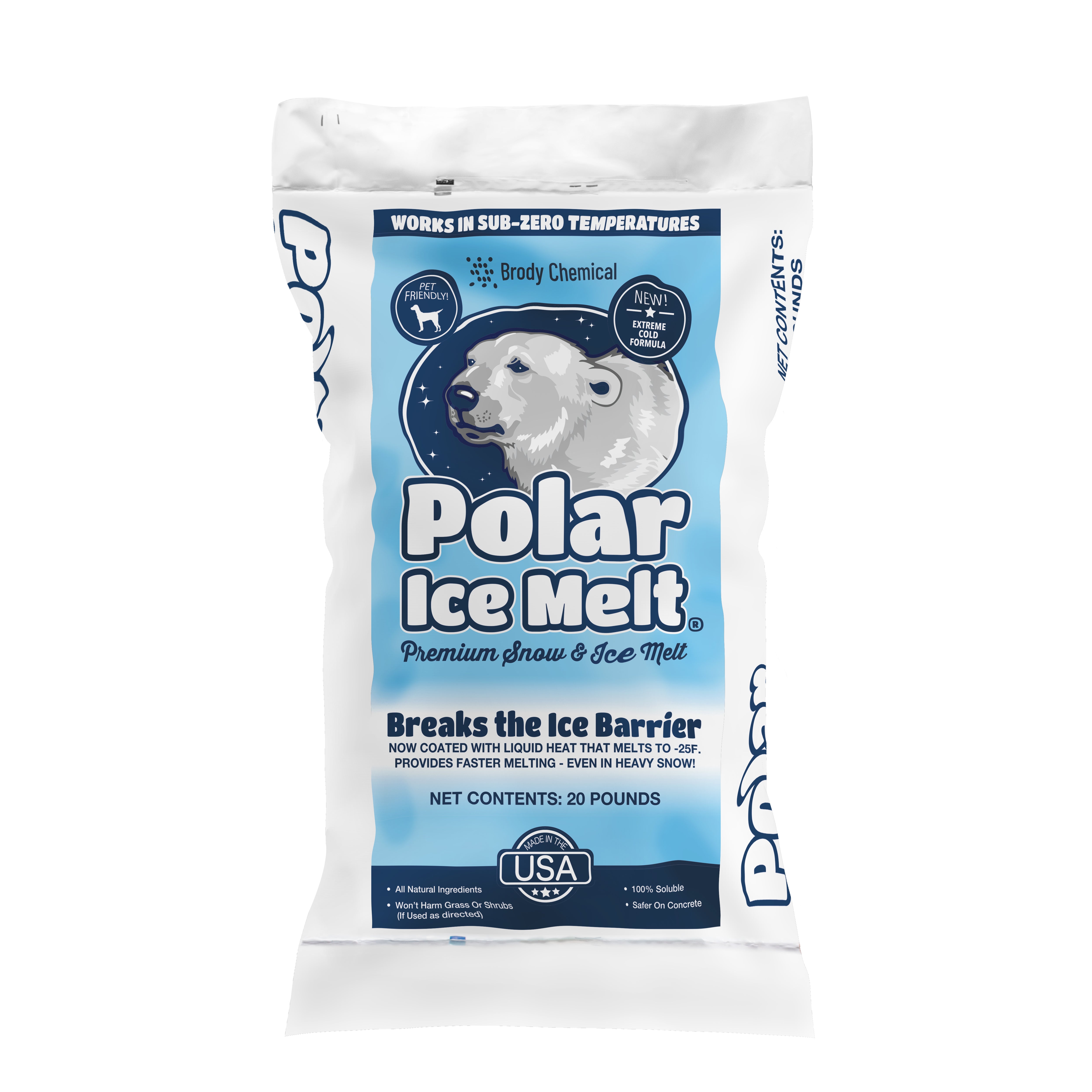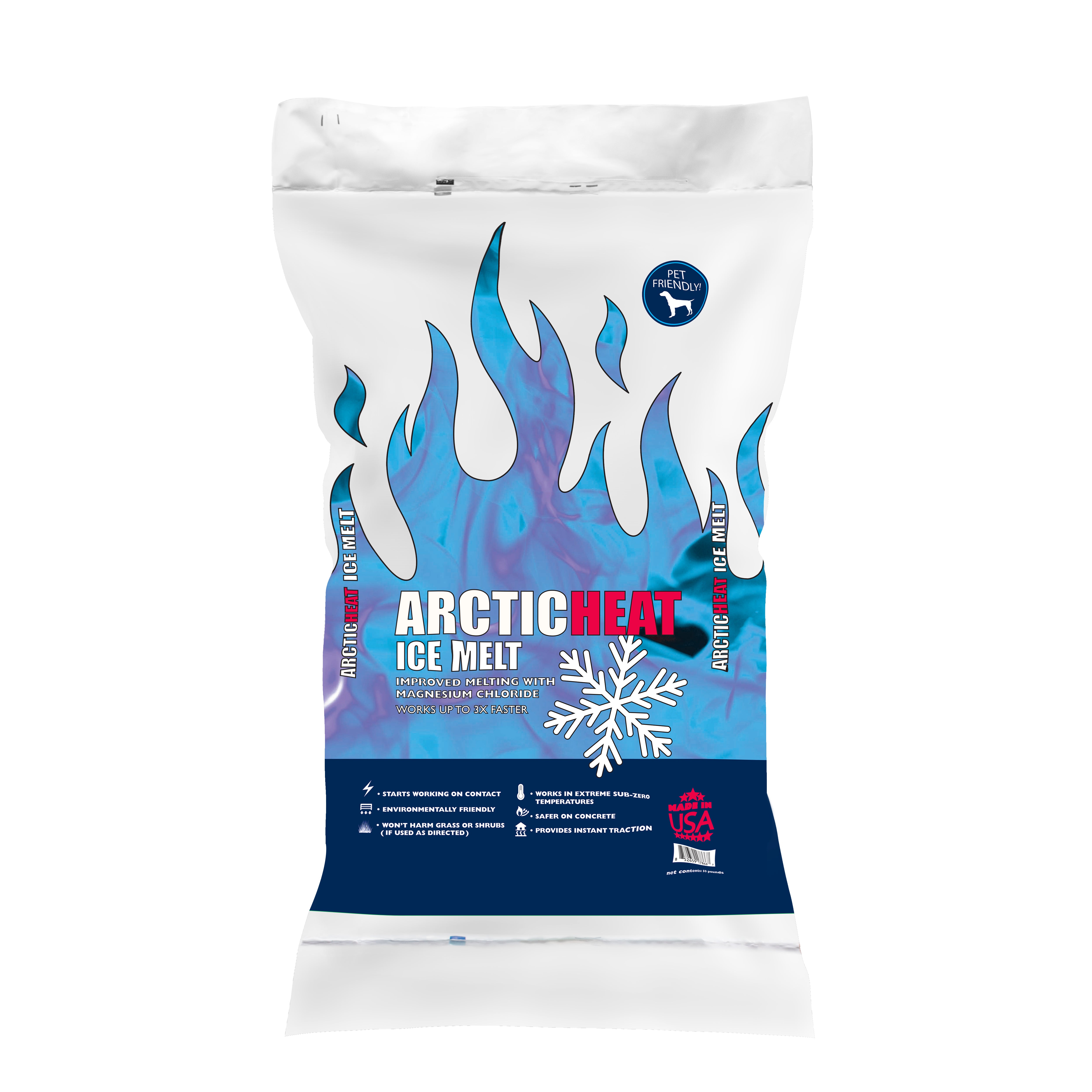Winter sidewalks need treatment, but your pet's paws shouldn't pay the price. Questions about calcium chloride safe for pets spike every year when snow blankets driveways and rock salt appears by the bag. Standard de-icing chemicals pose real risks to animals. Burning paws, stomach upset, and toxic exposure happen more often than most pet owners realize.
Key Takeaways
- Standard calcium chloride causes paw pad burns, irritation, and can lead to poisoning if ingested
- Symptoms of exposure include excessive licking, limping, vomiting, and lethargy
- Pet safe ice melt alternatives exist using magnesium chloride, urea, or acetate-based formulas
- Proper application techniques minimize risks even when using traditional de-icers
- Paw protection through booties or washing after walks prevents most injuries
Is Ice Melt Safe for Pets?
Most traditional de-icing products contain chemicals that weren't designed with animal welfare in mind. The calcium chloride formula (CaCl₂) works by generating heat when it dissolves, which melts ice effectively but also burns sensitive tissue on contact.
The pets walk directly on treated surfaces. Their paw pads absorb chemicals, and they lick their feet afterward. This double exposure creates two pathways for harm - direct contact injury and ingestion toxicity.
Rock salt ranks among the worst offenders. Sodium chloride crystals cut into paw pads while the salt itself draws moisture from skin, causing severe dryness and cracking. Calcium chloride generates more heat than standard salt, pushing working temperatures lower but increasing burn potential.
Not all non toxic ice melt chemicals live up to their marketing claims. Products labeled "safe" or "eco-friendly" might reduce harm compared to straight salt, yet still cause problems for animals. Reading ingredient lists matters more than trusting front-label promises.
Temperature plays a role in exposure severity. Colder conditions mean longer contact time as ice melts slowly. Warmer days create slushy brine puddles that coat paws thoroughly. Neither scenario favors pet safety when harsh chemicals dominate your ice-fighting arsenal.
Professional formulations from manufacturers offer clearer ingredient transparency than generic hardware store bags. Knowing exactly what touches your property helps you protect both people and pets.
The Dangers of Ice Melt for Pets

Direct paw contact with calcium chloride creates immediate problems. Chemical burns develop within minutes on sensitive paw pads, especially between toes where skin stays thinner and more vulnerable. Pets show discomfort by limping, holding up paws, or refusing to walk.
Excessive licking follows naturally after paws touch irritating substances. This instinctive cleaning behavior introduces chemicals into the digestive system. Small amounts cause drooling and mild stomach upset. Larger doses trigger vomiting, diarrhea, and more serious complications.
Calcium chloride safety concerns extend beyond basic irritation. Significant ingestion leads to:
- Electrolyte imbalances disrupting normal body functions
- Elevated calcium levels affecting heart rhythm
- Kidney stress from filtering chemical overload
- Dehydration as the body tries to flush toxins
- Neurological symptoms in severe cases
Cats face heightened risks due to their grooming habits. They spend more time licking paws and fur, accumulating higher chemical exposures. Their smaller body size means lower toxic thresholds. Indoor cats venturing outside briefly still track residue indoors on their feet.
Pre-existing health conditions amplify danger. Animals with kidney disease, heart problems, or compromised immune systems tolerate chemical exposure poorly. Senior pets and puppies show vulnerability at opposite ends of the age spectrum.
Repeated exposure creates cumulative damage. Paw pads toughen somewhat through regular walking, but chronic chemical contact breaks down this protection. Cracks deepen, infections develop, and healing slows when tissue faces constant assault.
Some dogs eat ice melt deliberately. The salty taste attracts them despite the danger. Storage matters - keep de-icing products secured away from curious noses. Spills during application need immediate cleanup before pets investigate.
Top Eco-Friendly and Pet-Safe Ice Melt Products
Environmentally friendly ice melt products use different chemistry to achieve melting without harsh side effects.
Pet-Safe Ice Melt Comparison

Magnesium chloride works down to -13°F while generating less heat than calcium chloride during dissolution. The liquid ice melter format applies more evenly than granular products, reducing concentrated exposure points.
Calcium magnesium acetate (CMA) delivers the safest chemical profile for animals. Derived from limestone and acetic acid, CMA causes minimal irritation and poses little ingestion risk. Performance limitations restrict use to temperatures above 20°F.
Urea-based products melt ice gently and benefit plants when spring arrives. Avoid overuse - excessive nitrogen burns vegetation and pollutes waterways.
Safe paw ice melt blends combine gentler chemicals with traction agents like sand for high-traffic pet zones. Specialized formulas like ice beater balance effectiveness with reduced environmental impact.
Sand and sawdust provide traction without chemical risks. These materials don't melt ice but prevent slips while eliminating toxicity concerns.
Heated mats and cables offer zero-chemical alternatives for entryways and small areas. Check actual ingredients on pet-friendly salt products rather than trusting front-label marketing.
How to Use Ice Melt Responsibly
Less product works better when applied correctly. Over-salting wastes money and multiplies pet exposure without improving melting.

Apply Strategically and Pre-Treat When Possible
Pre-treat surfaces before snow arrives. Polar ice melt applied ahead of storms prevents ice from bonding to pavement, reducing total chemical use.
Create designated pet pathways using animal-safe salt or chemical-free methods. Reserve harsher products for vehicle paths and main walkways.
Apply early morning or late evening to give chemicals time to work before peak pet activity hours.
Clean Up After Treatment
Sweep up excess product after ice melts. This simple step dramatically reduces paw contact and prevents tracking indoors.
Rinse treated areas during warmer winter days when water won't immediately refreeze.
Mark treated areas with flags or barriers so pets avoid freshly applied zones.
Protect Your Pet's Paws
Pet booties create physical barriers between chemicals and skin. Paw wax offers lighter protection that rinses off easily.
Establish post-walk paw washing routines. Keep warm water and a towel near the door for quick rinses before licking starts. Check between toes for ice balls and chemical residue.
Storage and Prevention
Eco melt products prove you don't need maximum toxicity to handle winter weather effectively.
Store products in sealed containers away from curious pets. Label everything clearly.
Watch weather forecasts to avoid unnecessary applications. Save chemicals for actual ice events rather than precautionary overdosing.
Recommendation:
Facing winter's chill? Brody Chemical Snow & Ice Melt products are designed to tackle icy conditions effectively. Whether you're dealing with sidewalks, driveways, or commercial spaces, our solutions ensure safety and reliability.
Explore Now →
Winter Safety Starts With Smart Choices
Your pets depend on you to make decisions that protect their health. Chemical de-icers exist on a spectrum from dangerous to tolerable, but calling any of them completely safe stretches the truth. Reduced-risk options, careful application, and protective measures combine to create winter conditions both humans and animals can navigate.
Balance melting performance against exposure risks for your specific situation. High-traffic commercial properties face different constraints than residential driveways where pets roam freely. Match product selection to actual needs rather than defaulting to whatever's cheapest or strongest.
Research before the first snow falls. Test different products in small areas. Watch how your pets react. Build winter protocols around their safety rather than forcing them to adapt to harsh chemicals. The effort invested now prevents painful paws and expensive vet visits later.
FAQ
Is calcium chloride safe for pets to walk on?
No, calcium chloride safe for pets isn't accurate – standard calcium chloride burns paw pads and causes irritation on contact. Even brief exposure creates discomfort, and extended walking on treated surfaces leads to chemical burns between toes and on pads. The heat generated during melting intensifies tissue damage.
What does calcium chloride do to pets?
Calcium chloride causes external burns and internal toxicity. Paw contact results in redness, swelling, cracking, and pain. When licked off paws or eaten directly, it triggers vomiting, excessive drooling, lethargy, and potentially life-threatening electrolyte imbalances. Severe cases require veterinary intervention.
Is magnesium chloride safe for pets' paws?
Magnesium chloride proves significantly safer than calcium chloride but isn't completely risk-free. It generates less heat during melting, reducing burn potential. Mild irritation can still occur with prolonged exposure. As a pet safe salt alternative, it ranks among the better chemical options available.
What is the best pet safe ice melt?
Calcium magnesium acetate (CMA) tops the safety list for pets, causing minimal irritation with low toxicity. Magnesium chloride runs a close second for practical use. Products specifically marketed as pet safe ice melt vary in effectiveness – check ingredients rather than trusting labels. Look for formulations designed to minimize pet risks while maintaining performance, and always read the complete ingredient list before purchasing.
How to use pet safe ice melt?
Apply sparingly – more product doesn't mean better melting. Pre-treat before storms when possible. Sweep up excess after ice melts. Create dedicated pet pathways using safest products available. Rinse paws after every walk outside during winter. Consider paw booties for additional protection during longer outings.



